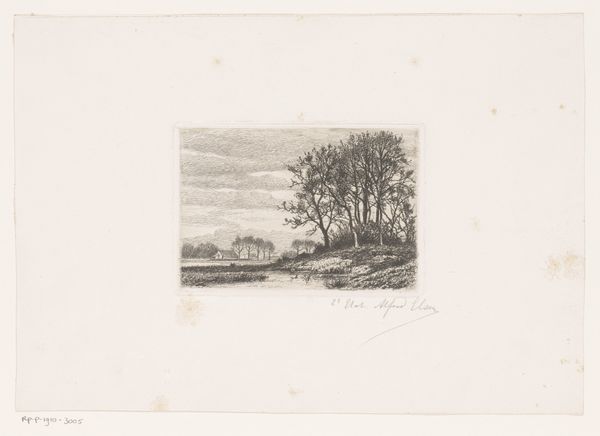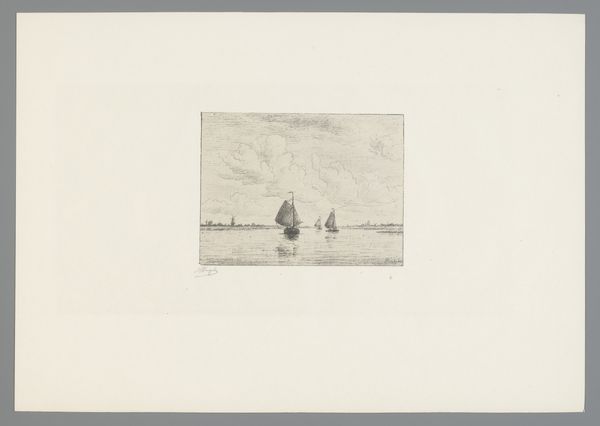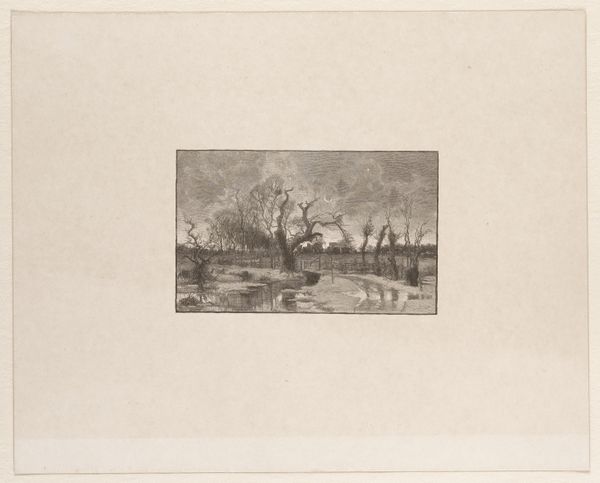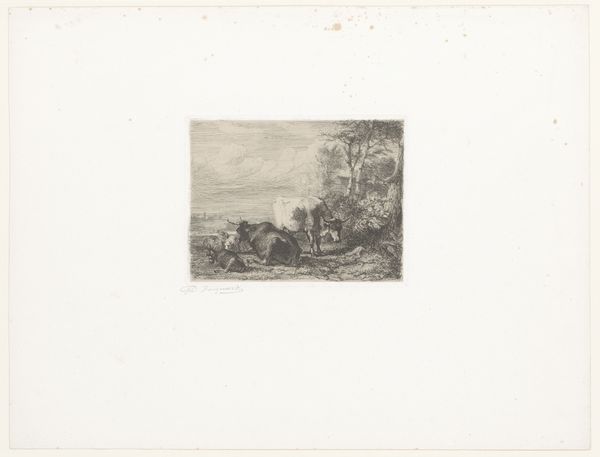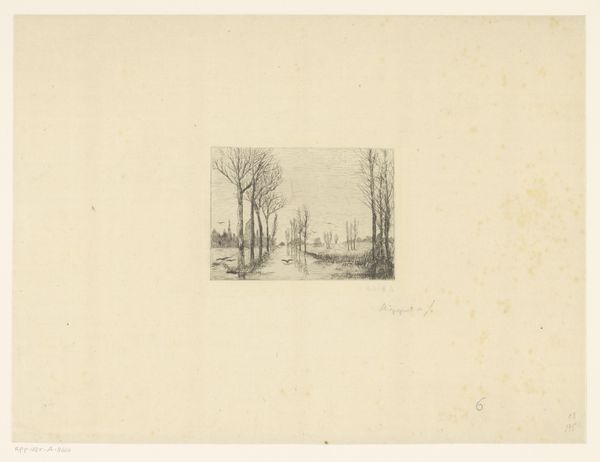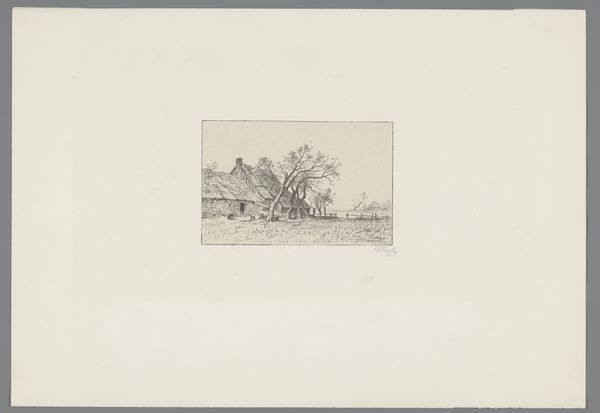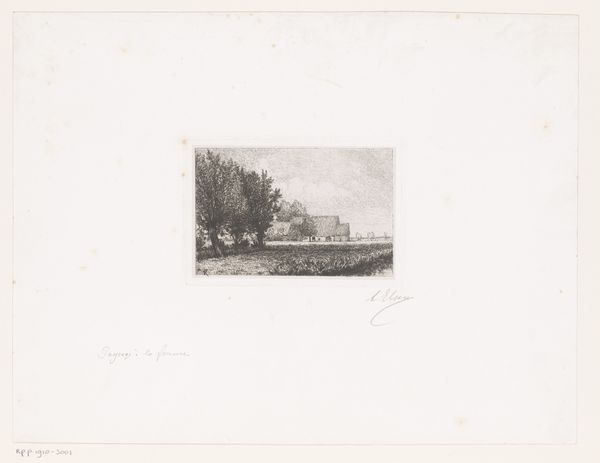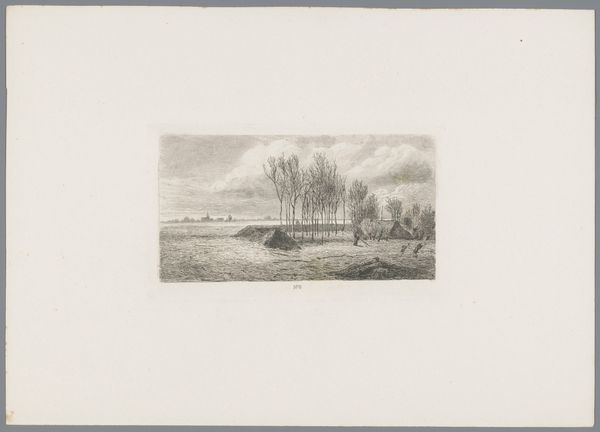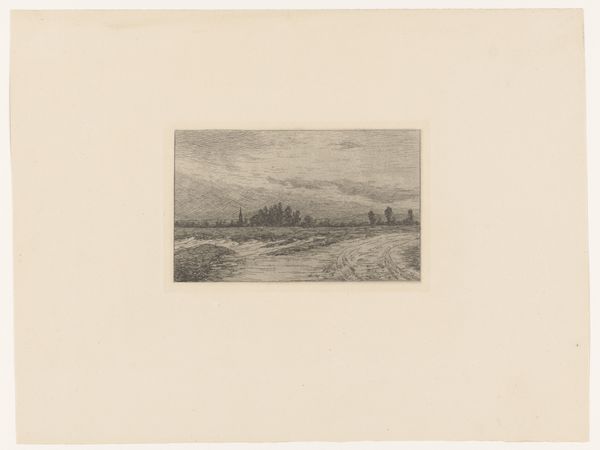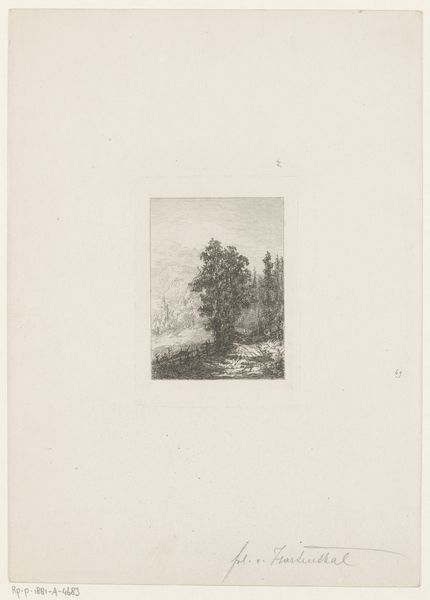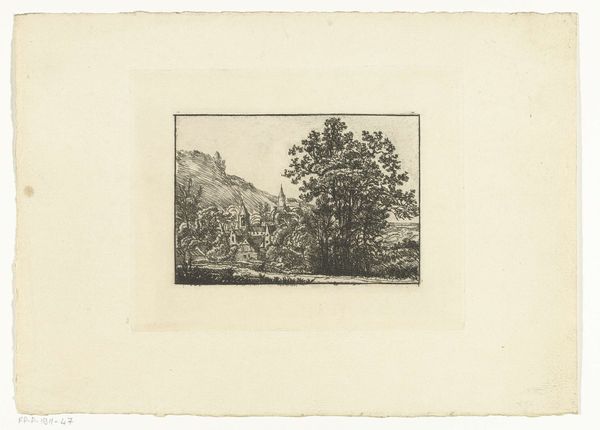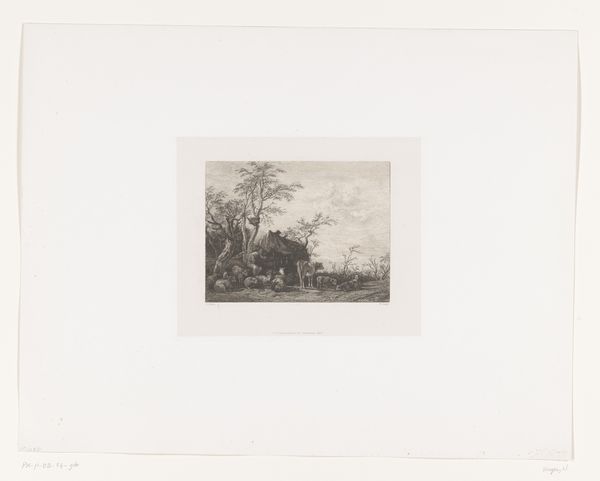
drawing, print, etching
#
drawing
# print
#
etching
#
landscape
#
river
#
realism
#
monochrome
Dimensions: height 320 mm, width 452 mm
Copyright: Rijks Museum: Open Domain
Curator: Here we have a monochromatic etching titled "Woning aan de Schie" attributed to Alphonse Stengelin, its creation sometime between 1862 and 1910. Editor: My first thought is quiet—the muted tones and understated composition evoke a peaceful, almost melancholic stillness. The sparse detail feels intentional. Curator: Precisely. The technique employed is etching, offering a subtle range of tonality. The composition adheres to classical landscape conventions: a central building, flanking trees, and the Schie river receding into the distance. Editor: It's a realist landscape, certainly. Yet, the limited palette directs you into seeing the composition as more than a description of place, perhaps a study on how subtle differences of light and shade suggest spatial depth. Curator: An interesting point. We might examine the role of the single building, a lone dwelling perhaps intended to represent an idyllic rural retreat? Editor: Or isolation. There's something undeniably lonely about that little building sitting so squarely on the shore. I wonder about the figures near the water and their connection to the house, are they walking to or away from it? Curator: One could say their position underscores a critical juxtaposition: the intersection between human activity and the natural environment. The river Schie serves, in this work, as both pathway and boundary. Editor: I keep coming back to the sheer artistry within those delicate lines. I almost wonder about Stengelin's process. He wasn’t just trying to document the landscape. Curator: He was shaping its very essence—carefully constructing this image as a moment to sit with stillness and solitude, something highly esteemed at the turn of the century. Editor: Right. It’s a lesson in reduction. An exercise in revealing profound feeling from apparent simplicity. Curator: Indeed, "Woning aan de Schie," invites us to find solace in the subtle language of landscape and, perhaps, of memory. Editor: I concur, let us go now into our own silent moments to consider this small scene and how it speaks across time.
Comments
No comments
Be the first to comment and join the conversation on the ultimate creative platform.
